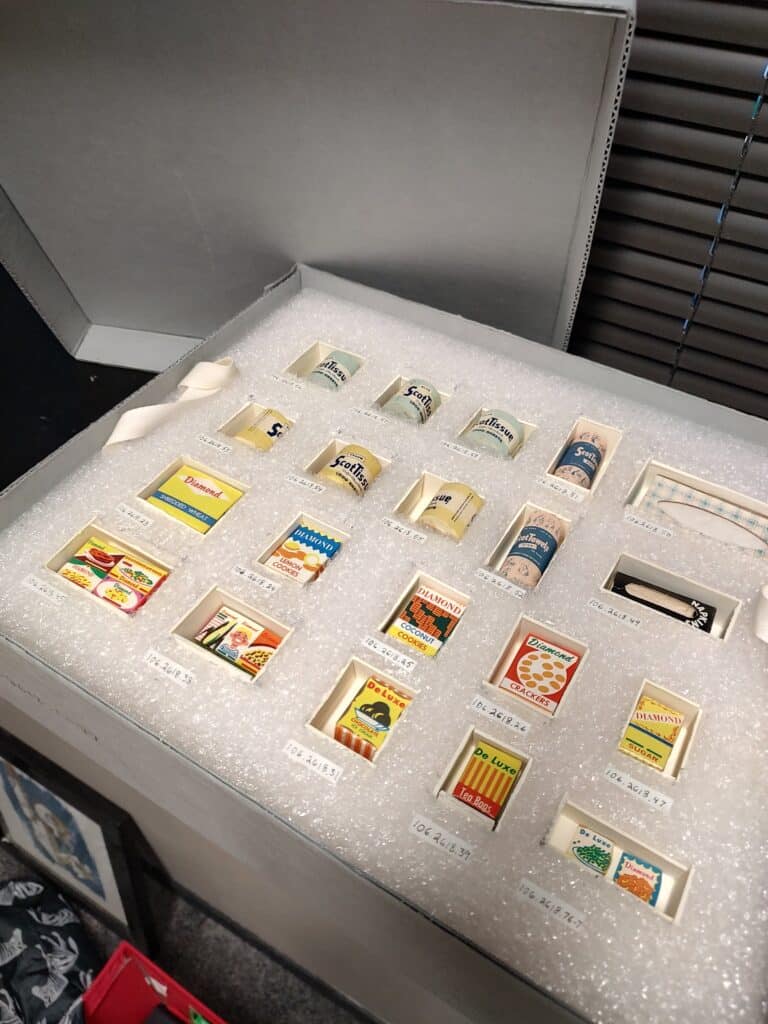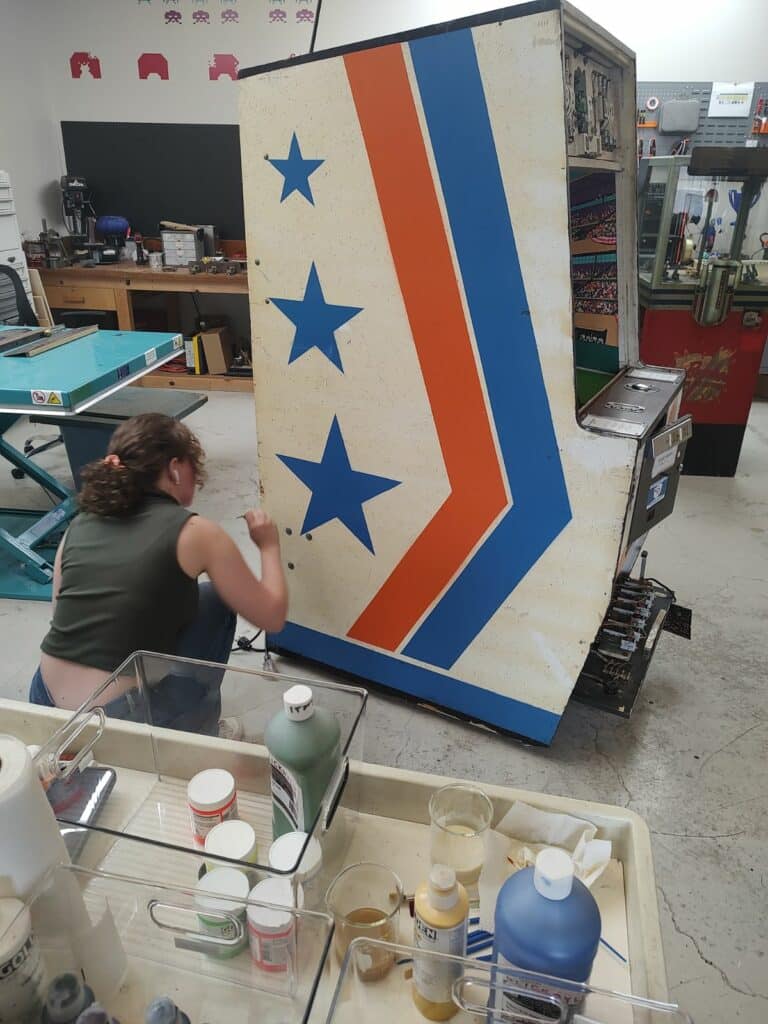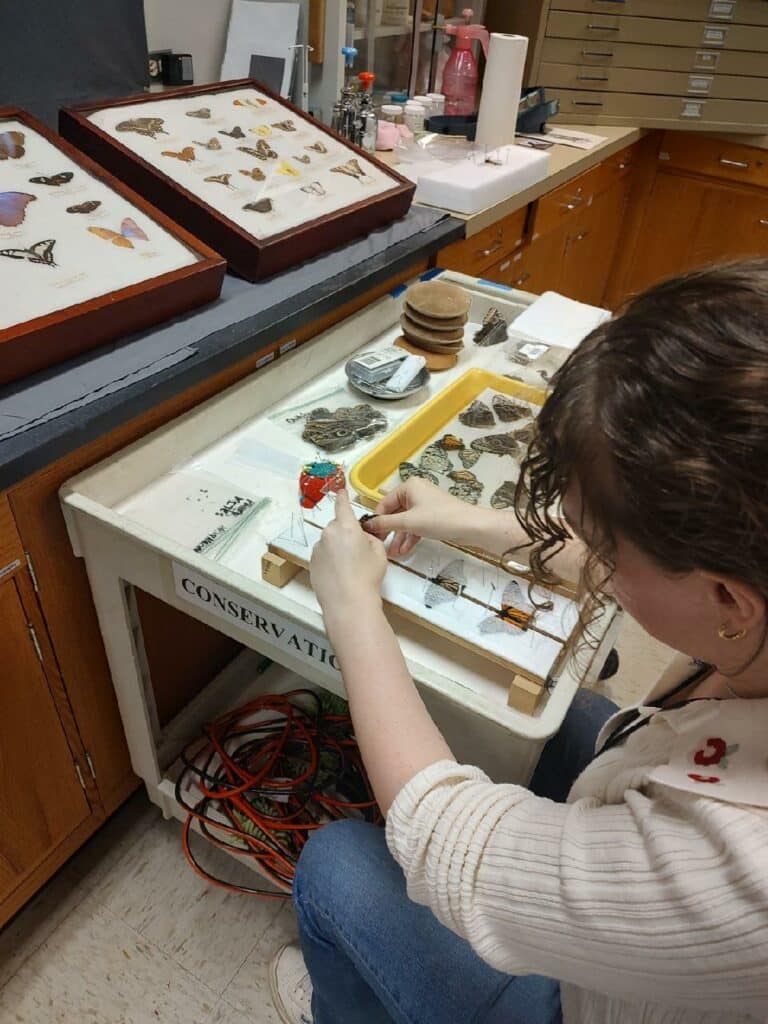As an undergraduate intern working with The Strong Museum’s Conservator in the summer of 2024, I spent my days working on a large variety of projects related to the museum’s enormous collection. A lot of work goes on behind the scenes at The Strong to produce and maintain the playful exhibits that the museum is known for, and it has been wonderful to see just a snapshot of the process. To commemorate my time at The Strong so far, I thought it would be best to walk through what a typical day at the museum would look like—even though there are rarely ever any “typical” days, as things are changing constantly!

The start of each week usually entails a walkthrough of the museum’s exhibits for some routine maintenance and check-ins with the exhibit cases. Depending on the day, we either clean the outer glass or unlock the cases to dust and vacuum the displays inside. Doing this so often has made me quite familiar with the collections throughout the museum, and I’ve stumbled upon some hidden gems and really cool objects! Something that has stuck out to me is how many teams are involved in maintaining the appearance and condition of the displays: there’s conservation of course, but the facilities, environmental services, exhibits, and collections teams are involved too depending on what needs to be done.
Some days I head down to our collections storage areas to help unpack or move large amounts of objects packed away in cardboard boxes. The collections storage at The Strong is massive, spanning multiple rooms that each seem to go on forever, full of rows and rows of floor-to-ceiling shelving. These shelves are (neatly) stacked with board games, arcade games, pinball machines, stuffed animals, dolls, dollhouses, action figures, electronic games, game consoles, handmade toys, costumes… the list is endless. Each time I am in collections storage, I notice a new object relating to a toy I enjoyed as a child, or a unique antique collectible, or a board game with a bewildering theme. I also often get reminded of my age when I’m there, as many franchise toys and video games peaked in popularity before I was even born (I regret to admit I didn’t really know what Atari was until working here). The overwhelming feeling is just how many fascinating and incredible objects the museum owns. The Strong shows off an enormous number of objects in its exhibits. However, like most museums, only about 5 percent of the total collection is on display at a given time. This fact only magnifies the significant impact The Strong has made in the world of toys and games, serving as a center for collecting and preserving the history of play. Its massive collection and thousands of acquisitions each year speaks to the dedication of the museum to its mission and all the work and planning that goes into maintaining such a powerhouse of history.

I usually spend my afternoons on individual projects in the conservation lab that I work in. These projects have been on the smaller side but have enabled me to learn a ton of hands-on skills that I had never tried before. My favorite has been the treatment of two 1960s Barbies that both had a whole slew of problems. Sticky plasticizer—a material used in plastics to make them flexible—on the surface was the biggest one, which required meticulous attention to remove using a special solvent and hand-rolled cotton swabs. The dolls’ tiny accessories had been repaired by the previous owner with very old tape and fraying string, all of which had to be fixed very carefully. Their hair was disheveled too, which made it fun to mix up custom plant-based “hair gel” and reshape their original curls. I have also worked on rehousing miniature paper and plastic food items into custom-made archival boxes with individual compartments for each item. That task required a lot of X-Acto knife work! I’ve also helped to retouch an old arcade game cabinet with reversible paint, set up conservation-themed activities for a summer camp, and more.
I spend the time in between meetings and individual projects by cataloging recent acquisitions, such as tons of Rubik’s Cube paraphernalia or scanning historical treatment reports for digitization. I also have regular discussions with the Conservator about the field of art conservation, which includes topics such as common practices, recent controversies, professional development, and more. Some days, I’ve had brief chats with various other departments, which has allowed me to learn a lot about the different careers and possibilities within the museum field.

Since the museum’s mission, audience, and collections are so multifaceted and diverse, there is lots to do all the time. I haven’t even mentioned the more audience-facing teams, such as public programs, marketing, graphic design, and exhibits fabrication! From my brief time here, I have seen many instances where the collaborative nature of the museum has propelled many projects forward. It has been a joy to work here and see behind-the-scenes at such a large museum, and I will remember my experiences for many years to come!
By Dina Garber, 2024 Strong Museum Intern


